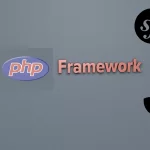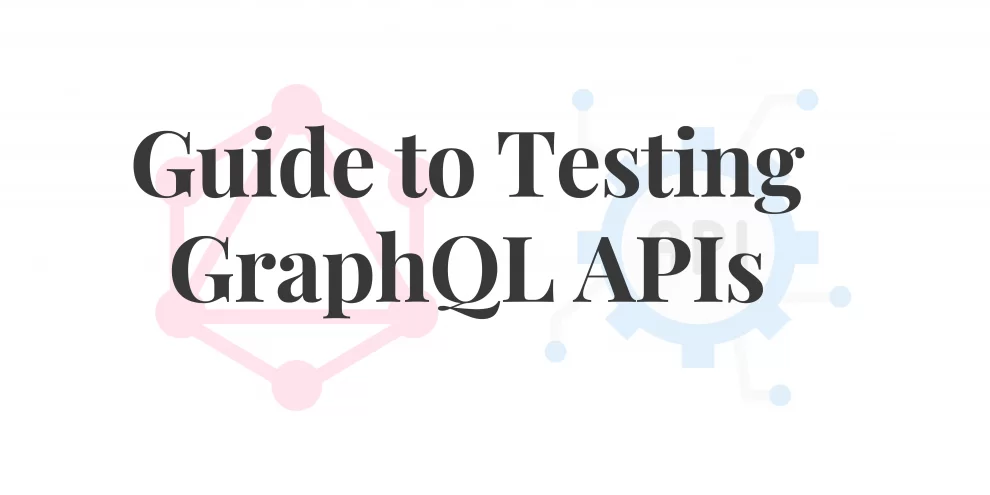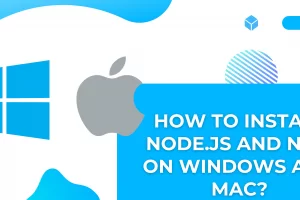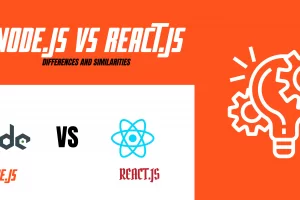Welcome to the dynamic realm of GraphQL API testing, where precision meets reliability in the development journey. This comprehensive guide is crafted to empower developers of all levels with the essential insights and techniques needed to navigate the intricate landscape of testing GraphQL APIs. Whether you’re a seasoned developer eager to refine your testing skills or a newcomer looking to grasp the fundamentals, this guide is your compass through the process of building robust and dependable applications.
In the ever-evolving world of APIs, GraphQL has emerged as a game-changer, redefining how we interact with data. Before we plunge into the depths of testing, it’s crucial to understand the essence of GraphQL and its departure from traditional REST APIs. GraphQL’s ability to allow precise data requests transforms the development paradigm, eliminating the challenges of over-fetching and under-fetching. This guide is designed to unravel the nuances of testing GraphQL APIs while strategically incorporating this keyphrase to seamlessly guide you through each phase of our exploration.
As we embark on this journey, we’ll traverse the foundational elements of testing GraphQL APIs, from setting up a robust testing environment to mastering advanced techniques like load testing and security testing. Automation becomes a trusted companion in our quest, ensuring efficiency through continuous integration, regression testing, and performance testing. Best practices, essential for success in testing GraphQL APIs, will be woven into the fabric of our discussions, providing a solid framework for creating reliable and secure applications. So, join us as we delve into the world of GraphQL API testing, a journey where every keypress and strategic test holds the power to shape the future of your application’s performance and resilience.
Understanding GraphQL APIs
Before we delve into the testing intricacies, let’s first establish a solid understanding of GraphQL APIs and their pivotal role in modern application development. GraphQL, a revolutionary query language, stands as a flexible alternative to traditional REST APIs. Its distinguishing feature lies in empowering developers to request precisely the data they need, streamlining communication between the client and the server.
Unlike REST, where multiple endpoints often lead to over-fetching or under-fetching of data, GraphQL provides a single endpoint for queries and mutations. This singular point of access makes it a potent tool for front-end developers, as it fosters a more efficient and tailored approach to data retrieval. The flexibility and efficiency of GraphQL have positioned it as a preferred choice for designing APIs in today’s dynamic development landscape.
Also Read: Why Should You Choose Laravel for Shopify App Development?
The Basics of Testing GraphQL APIs
Now that we have a solid grasp of GraphQL APIs, let’s dive into the foundational aspects of testing these dynamic interfaces. Testing GraphQL APIs is an essential step in ensuring the reliability and functionality of your applications. From setting up your testing environment to crafting comprehensive test suites, this segment covers the basics to help you build robust and dependable GraphQL APIs.
Setting Up Your Testing Environment:
The first stride in testing GraphQL APIs is establishing a reliable testing environment. Choose a testing framework that aligns with your project’s requirements, and don’t forget a tool for making API requests. Popular choices include Jest, which excels in JavaScript environments, and Apollo Client, known for its seamless integration with GraphQL.Writing Test Suites:
With your testing environment in place, the next step is crafting comprehensive test suites. A well-structured suite covers a spectrum of scenarios, from basic queries to intricate mutations. Think of your test suite as a safety net, ensuring that every aspect of your GraphQL API is thoroughly examined.Query Testing:
Queries lie at the core of GraphQL, serving as the mechanism to request data from the server. When testing GraphQL APIs, it’s crucial to verify that your queries return the expected data. Utilize your testing framework to scrutinize the correctness of your queries, thereby fortifying the reliability of your API.Mutation Testing:
Equally important is testing mutations, the operations that modify data on the server. Confirm that your GraphQL API handles mutations accurately and delivers the anticipated results. Through meticulous mutation testing, you ensure the integrity of data modifications within your application.Error Handling:
In the real world, API interactions can encounter errors. Testing how your GraphQL API handles errors is paramount. Include scenarios in your test suite where the API returns errors, and validate that your application responds gracefully, providing a robust user experience even in challenging conditions.
As we embark on this testing journey, keep in mind the keyphrase testing GraphQL APIs. Strategically applying this phrase throughout our discussions reinforces its importance and guides you through the essential concepts. With the basics of testing GraphQL APIs in place, we’re poised to explore advanced techniques and best practices that elevate your testing strategy to new heights. Stay tuned for the next steps in ensuring the resilience and efficiency of your GraphQL APIs.
Best Practices for Testing GraphQL APIs
To ensure the effectiveness of your GraphQL API testing, adopting best practices is paramount. Let’s delve into key strategies and principles that contribute to a robust testing approach, enhancing the reliability and performance of your GraphQL APIs.
Keep Tests Isolated:
Each test should operate independently, without relying on the state of other tests. This isolation ensures that a failure in one test doesn’t cascade into subsequent tests, making your test suite more resilient and easier to maintain.Document Your Schema:
Comprehensive schema documentation is a beacon for your development team. Clearly document the available queries, mutations, and types in your GraphQL schema. Tools like GraphQL Playground can aid in creating and maintaining accurate schema documentation.Use Mocking for Dependencies:
Isolating your tests from external dependencies, such as databases or external services, is crucial. Embrace mocking to simulate the behavior of these dependencies. This practice ensures that your tests focus solely on the functionality of your GraphQL API without relying on external factors.Maintain Test Data:
Keep your test data up-to-date and reflective of the production environment. Regularly update your test data to align with changes in your GraphQL schema, ensuring that your tests accurately represent real-world scenarios.Test Different Query Paths:
Explore various query paths within your GraphQL API. This involves testing not only the happy paths but also edge cases and potential error scenarios. A comprehensive test suite should cover a wide range of scenarios to ensure the resilience of your GraphQL API.Performance Monitoring:
Integrate performance monitoring into your testing strategy. Regularly monitor the performance of your GraphQL API in production, identifying and addressing potential bottlenecks. This proactive approach helps maintain optimal performance as your application scales.
By incorporating these best practices into your testing regimen, you establish a solid foundation for testing GraphQL APIs effectively. As we continue our exploration, these principles will serve as guiding beacons, ensuring that your GraphQL APIs not only meet functional requirements but also adhere to the highest standards of reliability and efficiency. Stay tuned for further insights and advanced techniques to elevate your GraphQL API testing game.
Also Read: Laravel 2023: Top 10 PHP Framework Advantages
Advanced Testing Techniques
Now that we’ve covered the basics, let’s elevate our understanding of testing GraphQL APIs with advanced techniques that go beyond the conventional. These strategies will empower you to address nuanced scenarios and ensure the resilience of your GraphQL APIs in the face of real-world complexities.
Load Testing:
As your application scales, understanding how your GraphQL API handles increased traffic becomes paramount. Load testing simulates a surge in users, helping you identify performance bottlenecks and optimize queries for optimal efficiency under heavy loads.Security Testing:
Security is a non-negotiable aspect of any application. Integrate security testing into your GraphQL API testing strategy to identify vulnerabilities and address potential threats. Look out for common security issues, such as injection attacks and authentication vulnerabilities.Subscription Testing:
GraphQL subscriptions enable real-time updates, introducing a dynamic aspect to your API. Testing subscriptions involves validating that your GraphQL API effectively broadcasts real-time data changes to subscribers. Ensure that your subscriptions work seamlessly in various scenarios to provide a reliable real-time experience.End-to-End Testing:
For a holistic approach, incorporate end-to-end testing that covers the entire application workflow. Simulate user interactions with your application, ensuring that GraphQL API integrations work seamlessly with the front-end. This comprehensive testing approach validates the end-to-end functionality of your application.
Tools for Testing GraphQL APIs
When it comes to testing GraphQL APIs, having the right tools at your disposal is crucial for a seamless and efficient testing process. Let’s explore some of the key tools that can enhance your GraphQL API testing experience.
Apollo Client:
Apollo Client is a versatile GraphQL client that excels in JavaScript environments. It provides a robust set of tools for testing GraphQL APIs, making it a popular choice among developers. With Apollo Client, you can execute queries, mutations, and subscriptions in your tests, ensuring a comprehensive testing coverage.Jest:
Jest is a widely used JavaScript testing framework known for its simplicity and speed. It seamlessly integrates with GraphQL APIs and supports snapshot testing, which captures a snapshot of the GraphQL response. This is particularly useful for ensuring that your API responses remain consistent over time.GraphQL Inspector:
GraphQL Inspector is a powerful tool for validating and linting your GraphQL schemas. It helps you catch potential issues early in the development process, ensuring that your schema adheres to best practices and remains consistent across different versions.Postman:
While traditionally associated with REST APIs, Postman has evolved to support GraphQL as well. It provides a user-friendly interface for making GraphQL queries and inspecting responses. Postman’s versatility makes it a valuable tool for manual testing and exploration of GraphQL APIs.GraphQL Playground:
GraphQL Playground is an interactive development environment for GraphQL. It allows you to explore your GraphQL schema, test queries and mutations, and document your API. Its intuitive interface makes it a valuable tool for both development and testing phases.Artillery:
Artillery is a modern, powerful, and easy-to-use load testing toolkit. While not GraphQL-specific, it can be employed to conduct load testing on your GraphQL API. Artillery helps simulate realistic user scenarios, allowing you to identify performance bottlenecks and optimize your API for scalability.
Integrate these tools to streamline testing, catch issues early, and ensure reliability and performance in your GraphQL APIs. As we explore further, they’ll be crucial for advanced testing techniques and refining your strategy. Stay tuned for more insights and strategies to bolster your testing toolkit.
The Importance of Test Coverage
Test coverage plays a pivotal role in the reliability and stability of your GraphQL APIs. It goes beyond mere checkbox ticking in the testing process; instead, it serves as a compass guiding developers toward a comprehensive understanding of their codebase and potential vulnerabilities. Let’s delve into why test coverage is so crucial for testing GraphQL APIs effectively.
Identifying Potential Issues:
A high test coverage ensures that a significant portion of your codebase is tested, allowing you to identify potential issues before they manifest in production. By systematically exercising different parts of your GraphQL API through tests, you create a safety net that catches bugs and inconsistencies early in the development cycle.Ensuring Functionality:
Test coverage guarantees that the essential functionalities of your GraphQL API are thoroughly examined. From basic queries to complex mutations and subscriptions, a well-structured test suite validates that each aspect of your API behaves as expected. This not only boosts confidence in your code but also ensures a consistent and reliable user experience.Facilitating Refactoring:
As applications evolve, code inevitably undergoes refactoring. Comprehensive test coverage provides a safety net during refactoring, allowing developers to make changes confidently, knowing that if they unintentionally introduce issues, the tests will catch them. This flexibility is crucial for maintaining code health and agility.Meeting Business Requirements:
Test coverage aligns your development efforts with business requirements. Ensuring that your GraphQL API responds correctly to various queries and mutations means that it meets the specifications set by your project stakeholders. This alignment contributes to the overall success and functionality of your application.Building Confidence in Code Changes:
With a robust test suite, developers gain confidence in making code changes. Continuous integration pipelines can automatically run tests whenever changes are pushed to the code repository, ensuring that new code adheres to existing functionality and doesn’t introduce regressions.Enhancing Collaboration:
A well-documented and comprehensively tested codebase enhances collaboration within development teams. Developers can easily understand the expected behavior of different components through the tests, making it easier to collaborate, troubleshoot issues, and onboard new team members.
In the realm of testing GraphQL APIs, test coverage stands as a cornerstone for building resilient and high-quality applications. It’s not just a metric; it’s a proactive approach to software development that fosters stability, reliability, and confidence in your GraphQL API. As we progress, keep in mind the importance of test coverage and its role in creating robust GraphQL APIs that stand the test of time.
Conclusion
Mastering GraphQL API testing is an ongoing journey demanding diligence, adaptability, and a commitment to software development excellence. In this guide, we’ve explored GraphQL intricacies, testing basics, and advanced tools.
Understanding the fundamentals of GraphQL laid the groundwork, showcasing its flexibility and efficiency in data retrieval. We then delved into the basics of testing GraphQL APIs, emphasizing the importance of a well-structured testing environment, comprehensive test suites, and meticulous validation of queries, mutations, and error handling.
Exploring advanced testing—load, security, subscription, and end-to-end—we expanded our toolkit for GraphQL API resilience and performance. Essential tools like Apollo Client, Jest, and GraphQL Inspector streamline testing processes effectively.
The importance of test coverage became evident as we discussed its role in identifying issues, ensuring functionality, facilitating refactoring, meeting business requirements, and building confidence in code changes. Test coverage is not merely a metric but a proactive strategy that fortifies your GraphQL API against unexpected challenges.















